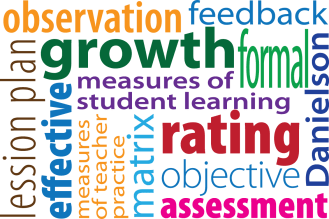New York State law requires that teachers be evaluated each year using a research-based method, a standardized rubric and measures of student learning.
Last spring, Gov. Andrew Cuomo issued an executive order to waive compliance with that law for the 2019–20 school year, but he declined to issue a waiver for this school year. So the UFT sought to negotiate a teacher evaluation process that is as simple as possible and takes into account this school year’s extraordinary working conditions.
School districts across New York State had to submit plans by Feb. 1. The UFT reached agreement with the city Department of Education on Feb. 26 on an evaluation system for the 2020–21 school year only.
Most teachers will receive only one informal observation and teachers who already had successful walkthroughs may not need to receive any additional observations at all.
“The union’s goal was to make sure the DOE’s evaluation plan reflected the unique circumstances and challenges facing teachers this school year,” said UFT President Michael Mulgrew. “Teachers deserve a fair process and a fast and simple way to challenge a rating if a principal is not following the correct procedures.”
Highlights of the agreement
The main components of the current teacher evaluation system will remain in place. The final rating will be determined by the same matrix. Below are the modifications for this school year only.
Measures of Teacher Practice (observations)
Number and kind of observations
- One informal observation will be the default for all teachers who received a final rating of Developing, Effective or Highly Effective, or no rating at all in the 2018–19 school year.
- If a walkthrough observation has already been completed and the teacher received an Effective or Highly Effective rating, that could count as their single observation for the year and no additional observation would be required.
- If a teacher receives a rating of Developing or Ineffective on the first observation, the teacher will receive a second formal observation with a preobservation conference.
- Teachers who received an Ineffective or Unsatisfactory rating in the 2018–19 school year will receive one informal and one formal observation.
- All observations must be completed by June 12.
Observation rubric
- Teachers will be observed based on the original version of the Danielson rubric — not the Danielson framework for remote teaching.
- Teachers will not be penalized for things beyond their control, such as the number of students attending class or the amount of time remote students spend logged in. For the student engagement component of the Danielson rubric this school year, the plan instructs evaluators to focus on what the teacher says and does, not what students say and do.
Conferences
- An initial planning conference is encouraged, but not required unless the teacher received an Ineffective or Unsatisfactory rating in the 2018–19 school year.
- A summative conference is not required unless the teacher’s year-end Measures of Teacher Practice (MOTP) score is Developing or Ineffective.
Measures of Student Learning
With state standardized tests being administered on a limited basis in the 2020–21 school year, a citywide measure can be used as the default for the Measures of Student Learning (MOSL) for this school year. Schools will also have the option of using a schoolwide MOSL.
Complaint process
A fast and simple resolution process has been established if evaluators don’t follow the correct procedures. Prior to receiving a final rating this year, teachers who believe they have received an improper initial rating due to a procedural violation, such as an evaluator citing evidence outside the definitions of rubric components, may challenge that rating through a complaint resolution process created for this school year only.
The teacher must file this form within five school days of knowledge of the act or occurrence that has spurred the complaint.
The online form, called the APPR Complaint Form, is available in the evaluation section of the UFT website at www.uft.org/teaching/teacher-evaluation. You must be logged in and a teacher covered by the Advance system to be able to access it.
The appeals process for a final rating remains the same.
